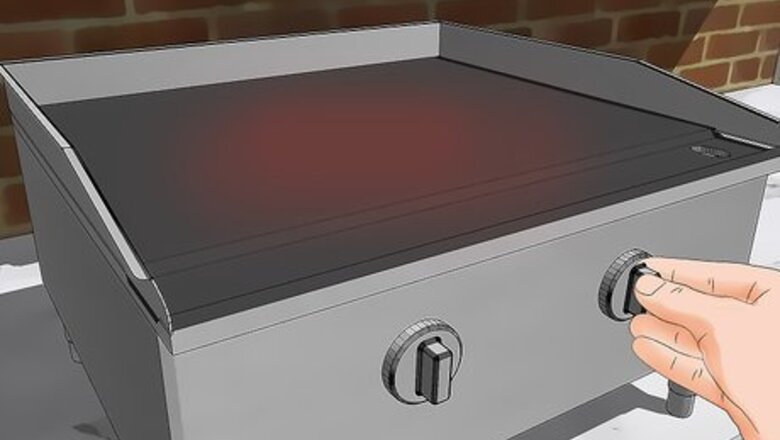
views
Removing Grime
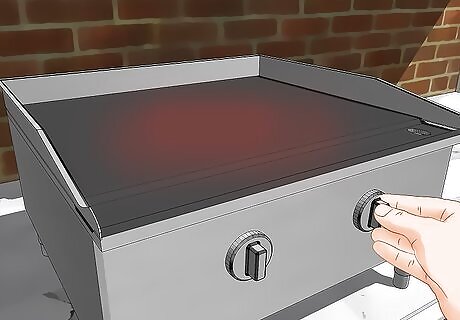
Turn on the griddle. With your griddle warm, caked-on bits of grime should come off more easily during cleaning. Turn your griddle to the appropriate setting. Different griddles are meant to be cleaned at different temperatures. Different griddle soaps, likewise, are intended for use at different ideal temperatures. Check both your griddle’s user manual and the griddle soap you obtained to determine what temperature you should set your griddle to. It will be easier to clean your griddle when you’ve just used it, before it’s cooled, than it will be to try and clean the griddle after the bits of whatever you’ve been cooking have caked onto its surface.

Mix your water and soap. In a small bowl or bucket, combine griddle soap with warm water. Your griddle soap might have specific directions regarding the proportions of water and soap should be mixed. For instance, perhaps your soap will come in a single packet that must be mixed with two cups of water. Do not submerge your griddle entirely in water and soap. Doing so could damage the electronics inside your griddle.
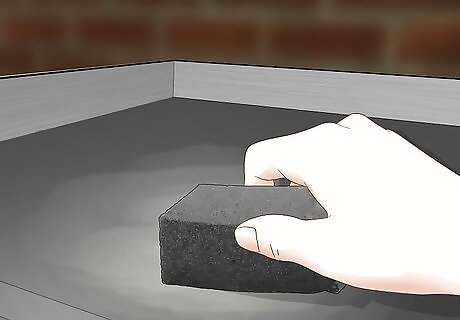
Scrub your griddle. After dipping your sponge or cleaning implement into the warm, soapy water you’ve prepared, use it to loosen and remove as much gunk as possible. Use a back-and-forth or up-and-down scrubbing motion when scrubbing your griddle. You could move from top to bottom, or from bottom to top. If you’re scrubbing your griddle with an up-and-down motion, you could move from right to left or from left to right as you scrub. Attach the drip tray if your griddle does not have one permanently attached. Place a bowl or small container beneath the drip tray’s drain to catch the water you use to scrub the griddle. Dip your sponge or griddle brush into the water frequently during the cleaning process. This ensures the griddle receives a steady application of soapy water. If a moderate level of force is not removing gunk from the griddle, apply pressure more firmly when scrubbing.
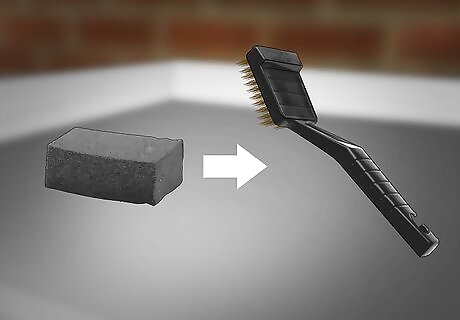
Move on to stronger scrubbing devices if necessary. For instance, if your griddle is not getting clean with a thin griddle sponge, use a thicker griddle sponge. If your griddle sponges have proven ineffective, try a griddle brush. If the griddle brush proves ineffective, try a griddle scraper. Sometimes alternating between different cleaning instruments produces the best result. For instance, you might use a griddle brush to loosen material that has caked onto the griddle, then scrape it off with a griddle scraper.
Maintaining Your Griddle

Season your griddle before use. When you first use your griddle, you can add a protective coating – or “seasoning” – to it to prevent rust and make it easier to clean in the future. To season your griddle, pour one teaspoon (five milliliters) of vegetable oil onto the griddle. Use a paper towel to spread the oil across its entire surface. Let the oil sit on the griddle for one hour. Wipe up any residual oil after an hour has passed. Season your griddle again if you’re using it again for the first time after a long period of disuse.

Avoid cooking with non-stick cooking spray and corn oil. Non-stick cooking sprays have a high water content and burn easily. And if you’re cooking on a griddle with a nonstick coating, they’re completely redundant. Corn oil, likewise, should be avoided. The high sugar content in corn oil tends to caramelize (melt) and coat the surface in a sticky, burnt mess.
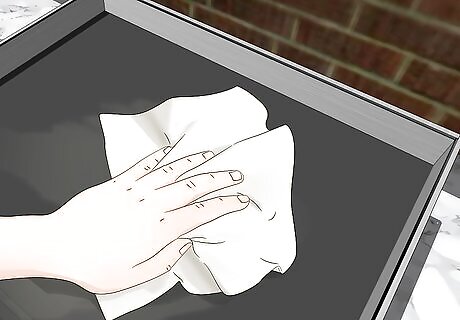
Wipe your griddle down after light cooking. Use a paper towel to wipe the surface down. The small amount of oil that remains on the griddle after a light wipe-down will help season the griddle.
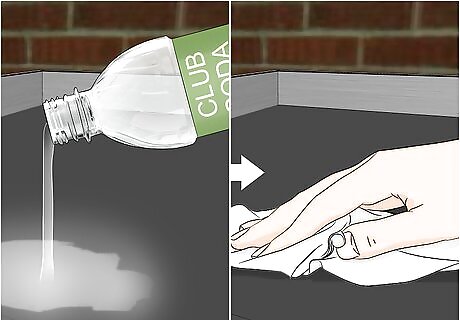
After heavy cooking, wipe your griddle down with club soda. Pour room-temperature club soda directly on the griddle. Pull oil and food scraps toward the grease trough with a metal spatula. Wipe the surface down with a paper towel, then season your griddle.
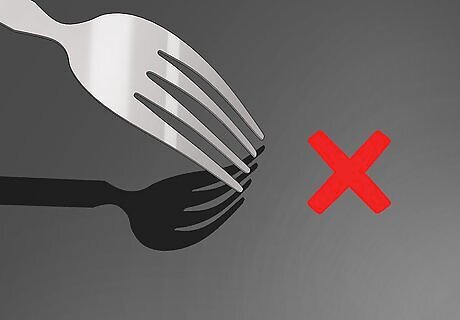
Do not use metal utensils. When using your griddle, avoid using metal forks or spatulas. These could lead to scratching or removal of your griddle’s nonstick coating, if present. Instead, utilize rubber, plastic, or wooden cooking implements. One exception to this rule is in the case of ceramic or stainless steel griddles, which can withstand a metal griddle scraper or other implement.
Using Effective Cleaning Tools

Obtain griddle soap. Specialized griddle-cleaning sops will make cleaning your griddle a breeze. If you cannot locate a specialized griddle-cleaning soap from your local home good store, use an extra-strength soap, or one that is designed to cut through layers of grime and grease.
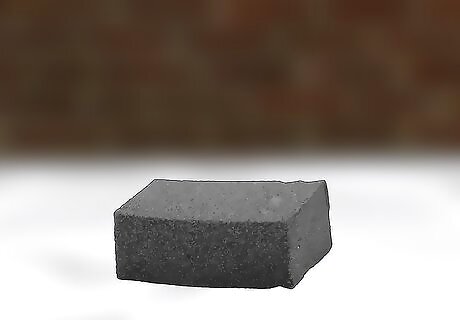
Obtain a griddle sponge. A griddle sponge is specialized type of scrubbing device for griddles. Its surface will scour your grimy griddle to remove caked-on bits of grease and burnt material. Griddle sponges are available with varying thicknesses. The more cleaning your griddle needs, the thicker your griddle sponge should be. Do not use steel wool or other abrasive cleaning devices to clean your griddle.
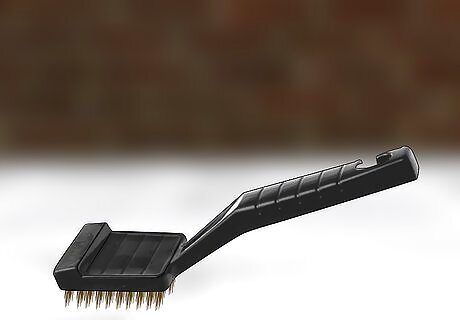
Obtain a griddle brush. For larger griddles, or griddles with grime and crust that simply won’t budge even when scrubbed with a griddle sponge, you’ll need to invest in something more heavy-duty. For this kind of cleaning, get a griddle brush from your local kitchenware store. A griddle brush is a stiff-bristled brush, typically with a wooden handle, that will help you remove even the most tenacious griddle grime.
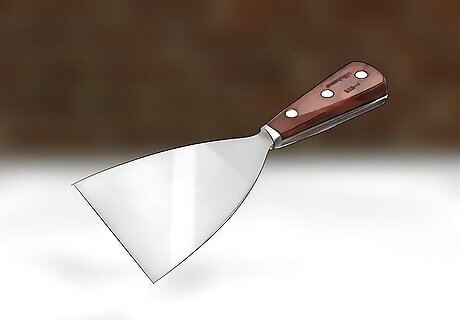
Get a griddle scraper. A griddle scraper is a kitchen tool that resembles a paint remover. From the comfortable handle, a fan-like blade extends outward to a straight edge. It is this edge which is used to scrape the griddle of residue and stuck-on bits.















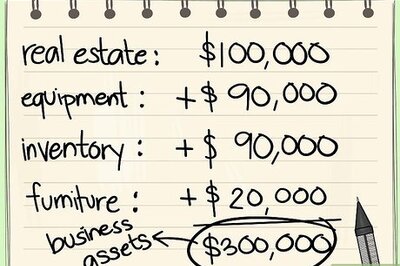



Comments
0 comment